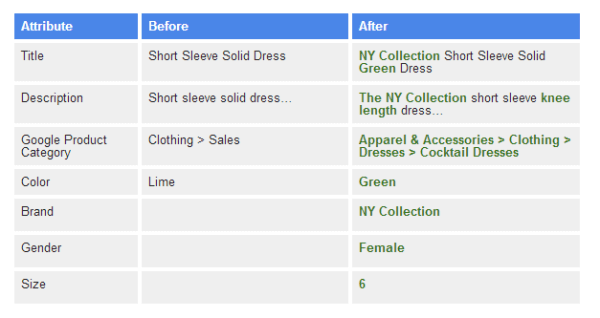Shopper FOMO – What Is It & Are You Dealing With It Appropriately?
FOMO, or “fear of missing out,” is something that is playing an increasingly significant role in today’s digitally connected world. Wikipedia defines it as follows: Fear of missing out or FOMO is a form of social anxiety — a compulsive concern that one might miss an opportunity for social interaction, a novel experience, profitable investment […]
FOMO, or “fear of missing out,” is something that is playing an increasingly significant role in today’s digitally connected world. Wikipedia defines it as follows:
Fear of missing out or FOMO is a form of social anxiety — a compulsive concern that one might miss an opportunity for social interaction, a novel experience, profitable investment or other satisfying event. This is especially associated with modern technologies such as mobile phones and social networking services.
The web has provided us with more options and possibilities than ever before — but the downside to having a seemingly infinite amount of choices is that we often worry that we’re making the wrong ones, potentially missing out on something better or more exciting.
The Majority Of Consumers Have “Shopper FOMO”
Although FOMO is most often used in a social media context, it relates to Search and Shopping as well. A recent article published results from a study conducted by Compare Metrics, and the e-tailing group came up with some interesting results:
Findings from the study […] indicated that 73% of shoppers express fear of missing out (FOMO) when searching for products online. These consumers believe their searches are often misinterpreted and that “absolute” filters cut out product options they would have otherwise considered.
“That was a massive ‘a-ha moment’ for us,” Roberts said in an interview with Retail TouchPoints. “It really was shoppers not trusting their search results and truly being afraid to select a certain filter. They would ask: If I click this box, what is going to go away that might have been a perfect purchase?”
This prevalent “shopper FOMO” is symptomatic of a widespread lack of accurate and/or sufficient data when it comes to product information — and this lack of data could well be impacting online retailers’ bottom line. A recent survey of over 2,000 adults in the UK found that 42% had “given up on an online purchase because they didn’t have enough information about the purchase.”
Along those lines, consider the following statistics from Capgemini’s recent study, Beyond the Label: Providing Digital Information Consumers Can Trust:
Consumers need to trust the information about the product they’re buying. Online retailers need to ensure that they are supplying high-quality data in their product feeds and on their websites if they want to decrease shopper FOMO and increase conversions.
High-Quality Data Improves Faceted Search
Faceted search allows searchers to sift through information by applying filters. It is used frequently online in retail search of late, including almost all comparison shopping engines.
An example of faceted search in Google Shopping is illustrated below, where the facets/filters appear on the right hand side of the item described (a red dress), and the properties that may populate those facets are illustrated on the left hand side.
In order to ensure that your products have high visibility in comparison shopping engines and similar platforms, you’ll want to ensure that your product feeds are filled with high-quality data. This means that your product data should be accurate, descriptive and as complete as possible. Take the following example of how to improve low-quality feed data, from the Google Shopping blog:
In terms of the Google Product Category, you need to pick the most granular (and accurate) option possible. In terms of color, it is best to most closely match the color you specify to those used in the shopping engine’s search filters. In this case, populating the color field with “Lime” does not make sense as Google Shopping does not have that color option. Even if they are smart enough to categorize it as “green,” it still might not show up for broader “green” searches.
The above example is Google specific, but the principle is the same across all comparison shopping engines. Supply rich, valid information about each product in your data feed.
GTINs In Product Feeds
In e-commerce, there is a global product identifier that is leveraged across all major comparison shopping engines and search engines: a GTIN, or Global Trade Item Number. In the U.S., this is better known as a UPC (Universal Product Code). It is also the number above or below the barcode.
The GTIN is a unique number that identifies a specific product. Since this unique identifier is recognized worldwide, it’s a great way for shopping platforms to verify the exact item you’re selling, thus increasing consumer trust and preventing spammy or misleading listings.
Google and Amazon already require sellers to supply the GTIN in most cases, and comparison shopping engines that don’t already are bound to do so in the future to provide a better user experience for its customers. Ensure that you are supplying this data in all your product feeds, as this will maximize your visibility in shopping engines.
Key Takeaway
Having a rich, trusted source of product information so you can accurately populate search filters (with data and information both consumers and search engines can trust) is absolutely essential — and providing this information is a great first step toward mitigating shopper FOMO. Leveraging high-quality data and GTINs in your product feeds leads to greater customer satisfaction, higher conversions and lower ad costs.
Contributing authors are invited to create content for Search Engine Land and are chosen for their expertise and contribution to the search community. Our contributors work under the oversight of the editorial staff and contributions are checked for quality and relevance to our readers. The opinions they express are their own.
Related stories
New on Search Engine Land


